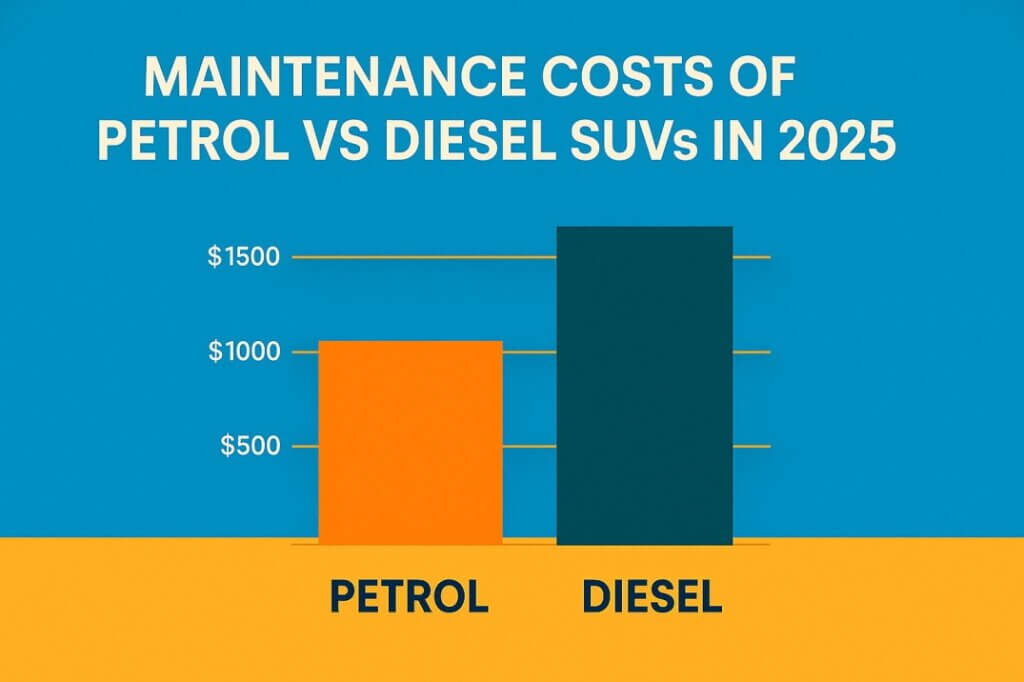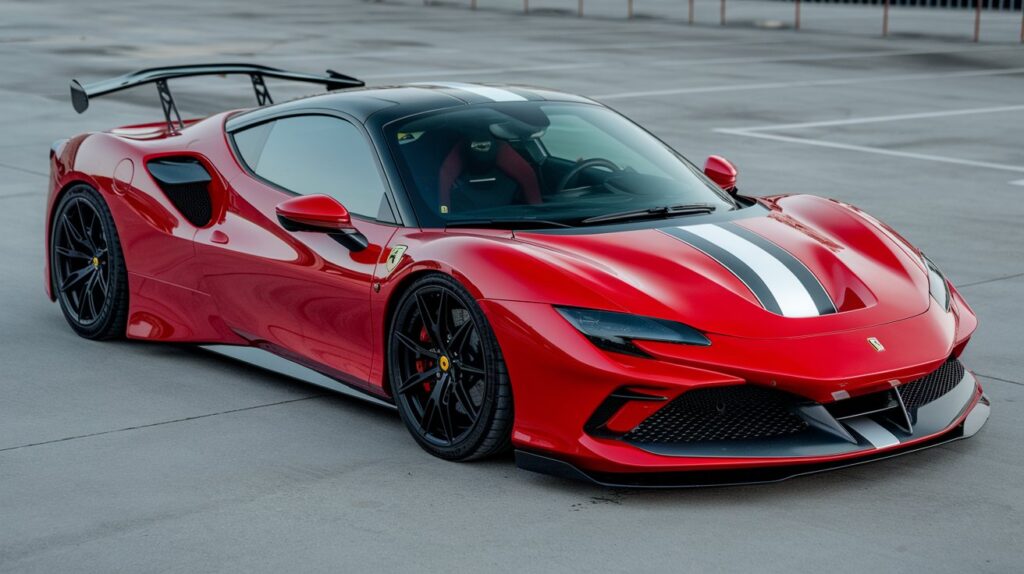Choosing between a petrol or diesel SUV in 2025 isn’t just about fuel economy or performance—it’s also about long-term ownership costs. One of the biggest financial considerations for SUV buyers today is maintenance. And while diesel engines were once thought to be more durable and cost-effective in the long haul, changing technology, stricter emissions regulations, and modern repair costs are shifting the landscape.
So if you’re wondering which is cheaper to maintain in 2025—petrol or diesel SUVs—you’re in the right place. In this article, we’ll break down all the key factors that impact maintenance costs, explain how each engine type stacks up, and help you decide what makes the most sense for your driving habits and budget.
Table of Contents
What’s the Difference Between Petrol and Diesel SUVs?
Before diving into costs, it’s worth revisiting what sets petrol and diesel SUVs apart under the hood.
Petrol engines are generally lighter, quieter, and cheaper to produce. They tend to offer smoother acceleration and are a popular choice for city driving and short commutes.
Diesel engines, on the other hand, are built for torque and long-haul efficiency. They excel on highways, offer better fuel economy (especially for larger vehicles), and typically deliver more pulling power for towing or off-roading.
But the tradeoff comes when it’s time to maintain them.
Maintenance Cost Breakdown: Petrol vs Diesel
1. Routine Service Costs
Petrol engines typically have simpler components, which makes regular servicing—like oil changes, air filter replacements, and spark plugs—relatively affordable. Diesel engines, due to their higher compression and added components (like turbochargers and diesel particulate filters), often require more expensive service intervals.
In 2025, service packages from mainstream brands (like Toyota, Ford, or Volkswagen) show the average scheduled service cost per year to be:
- Petrol SUV: $300–$500
- Diesel SUV: $500–$800
This gap widens further for premium brands like BMW or Land Rover, where diesel variants may cost over $1,000 per year to maintain.

2. Parts Replacement and Repairs
Here’s where diesel engines get tricky. Many diesel SUVs come with additional emission control systems such as EGR (Exhaust Gas Recirculation) valves and DPFs (Diesel Particulate Filters). These parts are prone to clogging, especially in urban stop-and-go traffic, and can cost thousands to repair or replace.
For example:
- DPF replacement can range from $2,000–$4,000.
- Turbocharger repairs (more common in diesels) can cost $1,500–$3,000.
- Fuel system issues with diesel injectors can be especially costly due to high pressure systems.
In contrast, petrol SUVs may need occasional spark plug or ignition coil replacements, but these are far less expensive.
3. Fuel and Lubricant Costs
While not strictly a maintenance cost, the type of fuel and oil needed for diesel engines is often pricier. Diesel oils have different additives and tend to be more expensive per litre.
Modern diesel engines also require AdBlue (DEF) to reduce emissions, which is another ongoing cost. This urea-based additive needs regular top-ups, especially if you’re driving a lot.
4. Software and Sensor-Driven Systems
Diesel engines in 2025 are heavily reliant on emission sensors, electronic modules, and software. A malfunctioning NOx sensor or a failed software update can send a diesel SUV into “limp mode” and trigger warning lights.
According to the UK’s RAC Foundation, modern diesel repairs linked to emissions systems now account for over 40% of unplanned repair bills.
Petrol engines are catching up in terms of complexity, especially with direct injection systems, but they still involve fewer high-cost failure points than diesels.
Pros and Cons of Petrol vs Diesel SUV Maintenance
Petrol SUVs
Pros:
Petrol SUVs are simpler to maintain. Repairs are cheaper, and parts are more widely available. Petrol engines also warm up faster, which reduces engine wear on short drives.
Cons:
They tend to require more frequent maintenance, such as oil and filter changes. Petrol engines also typically wear out faster under heavy loads or long-distance driving.
Diesel SUVs
Pros:
Diesel engines are often more fuel-efficient and built for endurance. They can last longer if properly maintained and are ideal for long commutes or towing.
Cons:
Maintenance is more expensive. Repairs—especially emission system-related—can be unpredictable and costly. Not suited for drivers who mostly do short trips.
Urban vs Rural Driving: Why It Matters
Your driving habits can significantly affect maintenance costs.
- If you mostly drive in the city, a petrol SUV is often the better choice. Diesel engines struggle with short trips because they don’t reach optimal temperatures. This can lead to clogged DPFs and premature wear.
- For those who rack up highway miles or live in rural areas, diesel SUVs shine. They’re more efficient on long runs and handle towing or rough terrain better.
In fact, the Australian Automobile Association (AAA) notes that many diesel reliability issues stem from owners using diesel SUVs for urban commutes—something they weren’t designed for (source).
Real-World Cost Comparison Example
Let’s take two popular midsize SUVs in Australia in 2025:
Toyota Fortuner Diesel vs Toyota Kluger Petrol
| Category | Fortuner (Diesel) | Kluger (Petrol) |
|---|---|---|
| Average Yearly Servicing | $750 | $450 |
| Common Repair Costs | Turbo: $2,500; DPF: $3,000 | Spark Plugs: $250 |
| Fuel Type & Additives | Diesel + AdBlue | Unleaded Petrol |
| Best Driving Scenario | Long highway runs, towing | Urban and mixed use |
Even though the Fortuner is more efficient on fuel, its upkeep over 5 years can be 20–30% more expensive, depending on use.
Alternatives Worth Considering: Hybrid and EV SUVs
If you’re trying to reduce long-term maintenance costs, hybrids and electric SUVs are starting to look more appealing in 2025.
- Hybrid SUVs offer the simplicity of petrol engines with improved fuel economy and fewer emissions components.
- EVs (Electric SUVs) eliminate oil changes, spark plugs, and emission systems altogether.
However, battery longevity and software support become the main considerations. EV maintenance is generally cheaper, but upfront costs and infrastructure limitations (charging networks, etc.) are still factors.
Frequently Asked Questions
Is it cheaper to maintain a petrol or diesel SUV in 2025?
On average, petrol SUVs are cheaper to maintain due to simpler components and fewer emissions-related repairs. Diesel SUVs can cost more in the long run, especially if used in urban settings.
Why do diesel SUVs have higher repair bills?
Diesel engines use complex emissions systems like DPFs and EGR valves that are prone to clogging and expensive to replace. They also often have turbochargers, which can fail over time.
Does diesel engine longevity offset maintenance costs?
Not always. While diesel engines may last longer with proper use (especially highway driving), the higher cost of parts and repairs can outweigh the benefits unless you drive long distances regularly.
Are diesel SUVs still worth buying in 2025?
They can be—if you’re a long-distance driver or tow heavy loads often. For city-based or light-duty use, petrol or hybrid SUVs offer a better balance of maintenance cost and reliability.
How can I reduce maintenance costs for my diesel SUV?
Use it for longer drives to keep the engine and DPF clean, stick to regular servicing, and use high-quality diesel fuel and AdBlue. Avoid using diesel SUVs for short, frequent trips.
Final Thoughts: Which SUV Costs Less to Maintain?
If you’re comparing petrol vs diesel SUV maintenance costs in 2025, petrol takes the lead for most everyday drivers. It’s simpler, cheaper to fix, and more forgiving in city conditions. Diesel still has a place—but mainly for drivers who travel long distances or need extra towing capacity.
Ultimately, the best choice depends on your lifestyle, driving habits, and budget. For short commutes and urban use, a petrol or hybrid SUV will likely save you money. If you’re a country driver pulling a caravan or doing serious mileage, diesel may still make sense—but be prepared for higher maintenance bills down the road.

